EGYPT – ÉGYPTE
Hudba Arabského Orientu a Severní Afriky (Music of the Arabian Orient and North Africa) – Supraphon 0 17 1933 – Disc 3, recorded by Václav Kubica, released 1976 (4 LP)
I have the pleasure of presenting this forgotten four-LP box set of essential authentic folk and classical music from Iraq, Jordan, Lebanon, Syria, Egypt, Libya, Tunisia, Algeria and Morocco recorded by Czech ethnomusicologist Vaclav Kubica (b. 1926) on the Czech label Supraphon. Kubica also released Iraqi music recordings on the great early Ocora series (Musique Populaire Traditionnelle d’Iraq – OCR 55).
Here’s the third disc of the collection showcasing rarily-heard Egyptian music, including oboes (E1), rebab (E2, E3), double arghul clarinet (E6), a wedding song (F1), dances (E1, E2, F7), worksongs (E4, F2), and more.
I will share this box set’s disk 4 (Libya, Tunisia, Algeria, Morocco) shortly.
J’ai le plaisir de vous présenter ce coffret quatre disques essentiel tombé dans l’oubli, comprenant de superbes musiques folkloriques et classiques authentiques d'Irak, de Jordanie, du Liban, de Syrie, d'Égypte, de Libye, de Tunisie, d'Algérie et du Maroc enregistrées par l'ethnomusicologue tchèque Vaclav Kubica (né en 1926) sur le label tchèque Supraphon. Vaclav Kubica a également publié des enregistrements irakiens incontournables sur Ocora (Musique Populaire Traditionnelle d’Iraq – OCR 55).
Nous présentons maintenant le troisième disque du coffret avec des musiques égyptiennes, y compris du hautbois (E1), du rebab (E2, E3), de la double clarinette arghul (D6), une chanson de mariage (F1), des danses (E1, E2, F7) et des chants de travail (E4, F2).
Je partagerai le dernier disque 4 (Libye, Tunisie, Algérie, Maroc) du coffret très prochainement.
E1 – Raks Nawaem dance, Instrumental ensemble led by Taufik Darwis with three mizmar (or zamr) oboes and a darbuka drum. Qena.
E2 – Azf Rebáb dance, Sauki Ahmed Mahmud’s instrumental ensemble with voices, four rebab violins and a darbuka drum. Village of Busid al-Nahal near Nap Llammadi.
E3 – Epic song of the heroic 11th century arab leader Abu Zayd Al-Hilali. Same ensemble as E2.
E4 – Masons’ worksong, voices. Luxor.
E5 – Dora Saidi Achdar vocal form, two singers, a darbuka and a flute. Village of Durunka (Asiut).
E6 – Dora vocal form. Singer with a double arghul clarinet player with a drone pipe. Village of Durunka (Asiut).
F1 – Wedding song about the bride's life for the next nine months wedding guests. Village of Fedimin, Fayum oasis.
F2 – Fishermen's worksong. Fayum oasis.
F3 – Tawsih poetry and song, singers and percussionists. Village of Izzauja (Asiut).
F4 – Shetawa, singing / Fayum oasis.
F5 – Genwa, vocalists and hand clapping / Fayum oasis.
F6 – Time-honored Hidah Arabic musical form inspired by the camel’s gait. Three singers from the village of Darau (Aswan).
F7 – Nubian Fiji song and dance. Soloist, choir and large tar frame drums. Village of Abu Simbel.
Tawsih poetry and song, singers and percussionists. Village of Izzauja (Asiut) (F3):
purchase
important traditional records to pursue my global


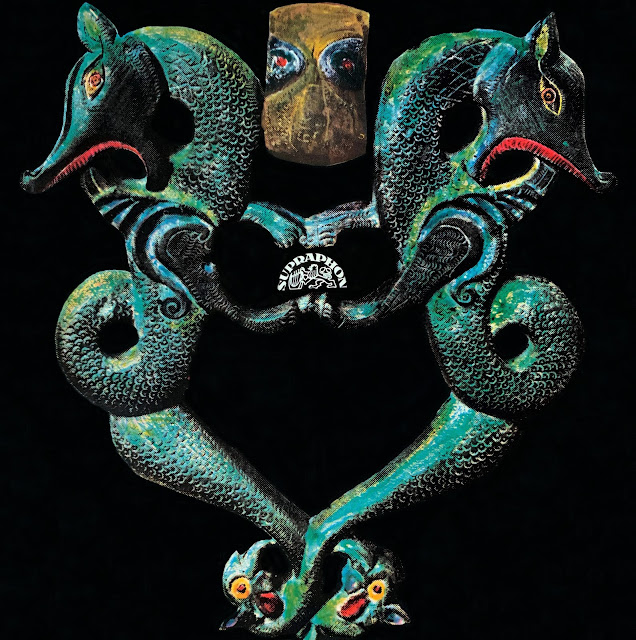

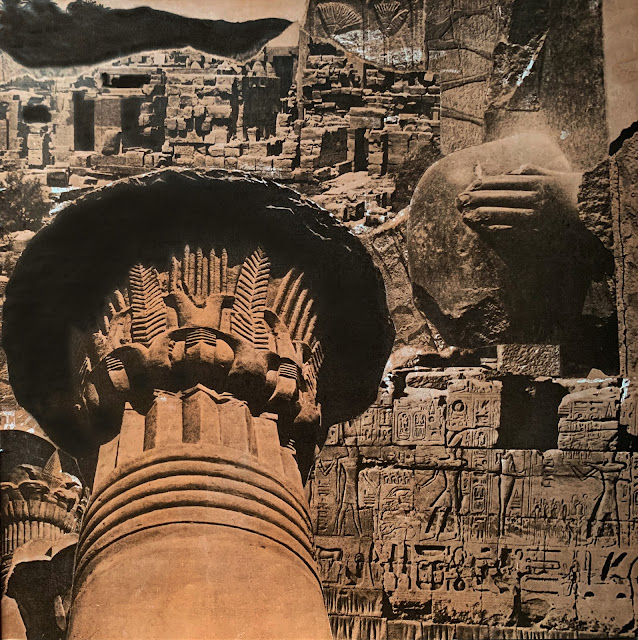
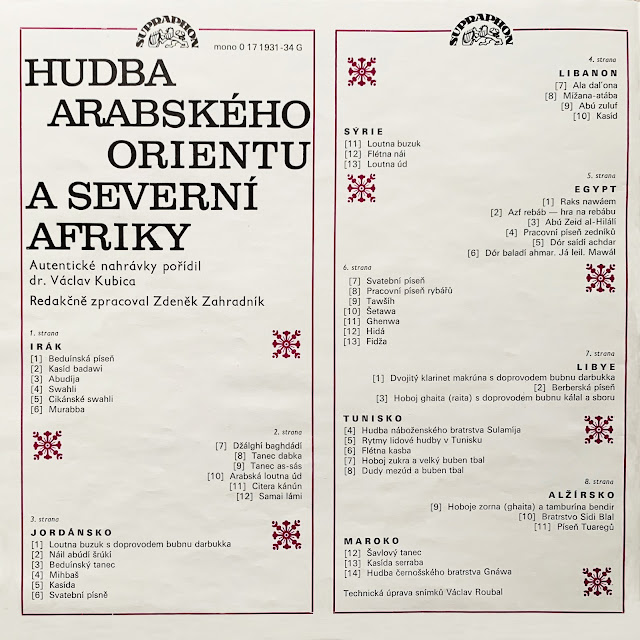

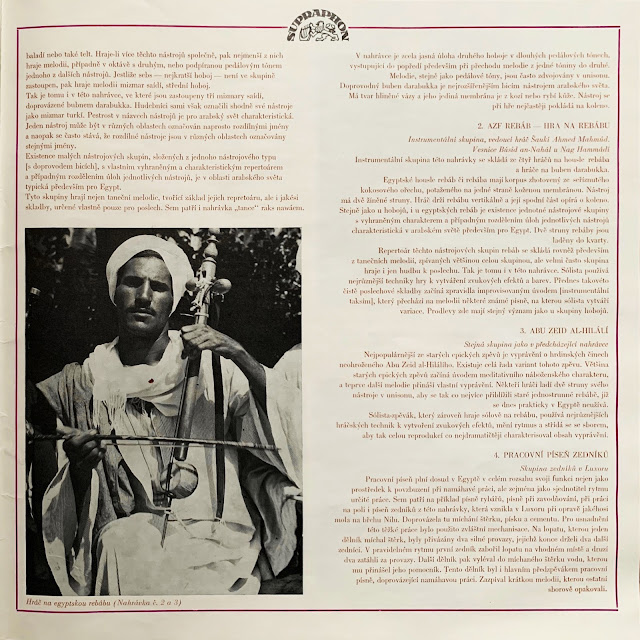
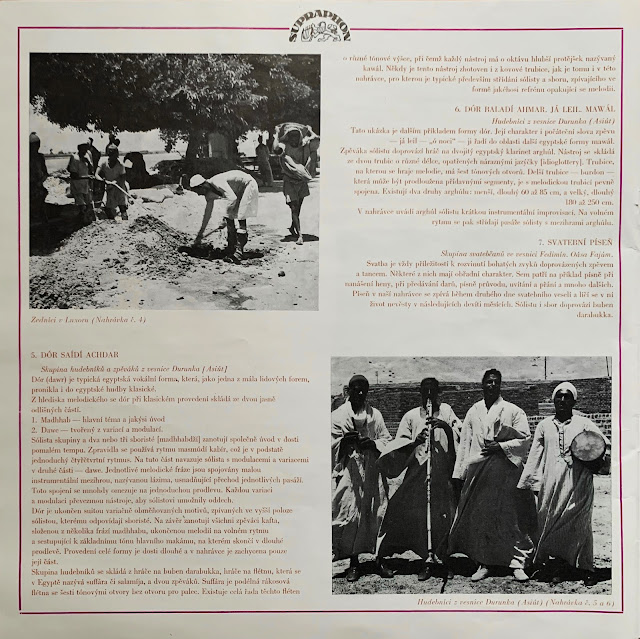


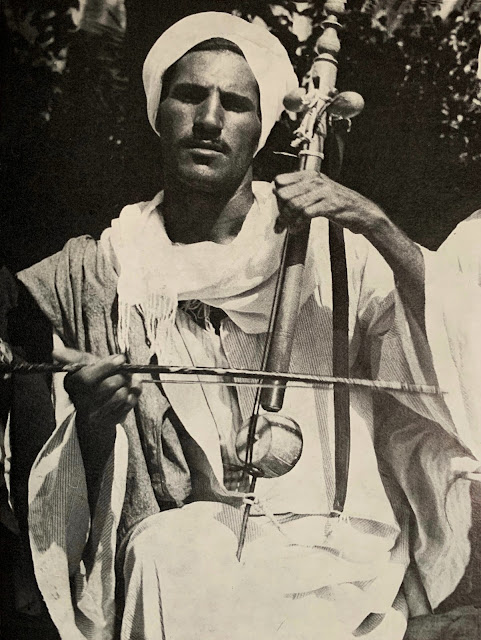
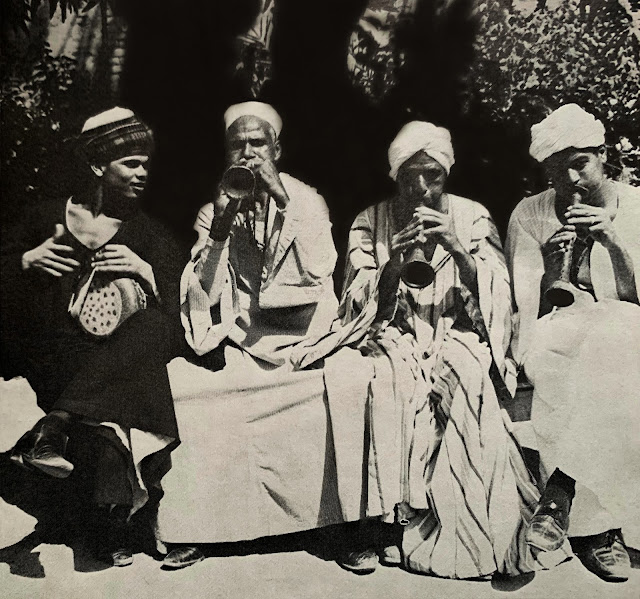
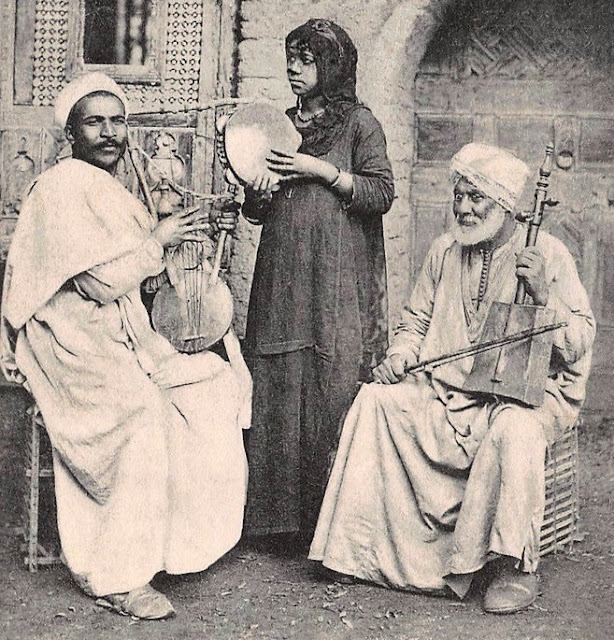
again again thank u
ReplyDeleteroberth